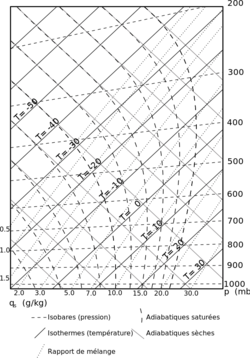Tephigram (nonfiction): Difference between revisions
Jump to navigation
Jump to search
| Line 9: | Line 9: | ||
== In the News == | == In the News == | ||
<gallery | <gallery> | ||
File:Components of a Nomogram.png|link=Nomogram (nonfiction)|[[Nomogram (nonfiction)|Nomogram]] says it will retrain for career as [[tephigram]]. | File:Components of a Nomogram.png|link=Nomogram (nonfiction)|[[Nomogram (nonfiction)|Nomogram]] says it will retrain for career as [[tephigram]]. | ||
</gallery> | </gallery> | ||
Revision as of 10:58, 15 April 2018
A tephigram is one of four thermodynamic diagrams commonly used in weather analysis and forecasting.
The name evolved from the original name "T-Theta-gram" to describe the axes of temperature (T) and entropy used to create the plot.
Usually, temperature and dew point data from radiosondes are plotted on these diagrams to allow calculations of convective stability or convective available potential energy (CAPE).
Wind barbs are often plotted at the side of a tephigram to indicate the winds at different heights.
In the News
Fiction cross-reference
- Tephigram - one of four thermodynamic diagrams commonly used in computational weather engineering.
Nonfiction cross-reference
- Nomogram (nonfiction) - a two-dimensional diagram designed to allow the approximate graphical computation of a mathematical function (nonfiction).
External links:
- Tephigram @ Wikipedia

